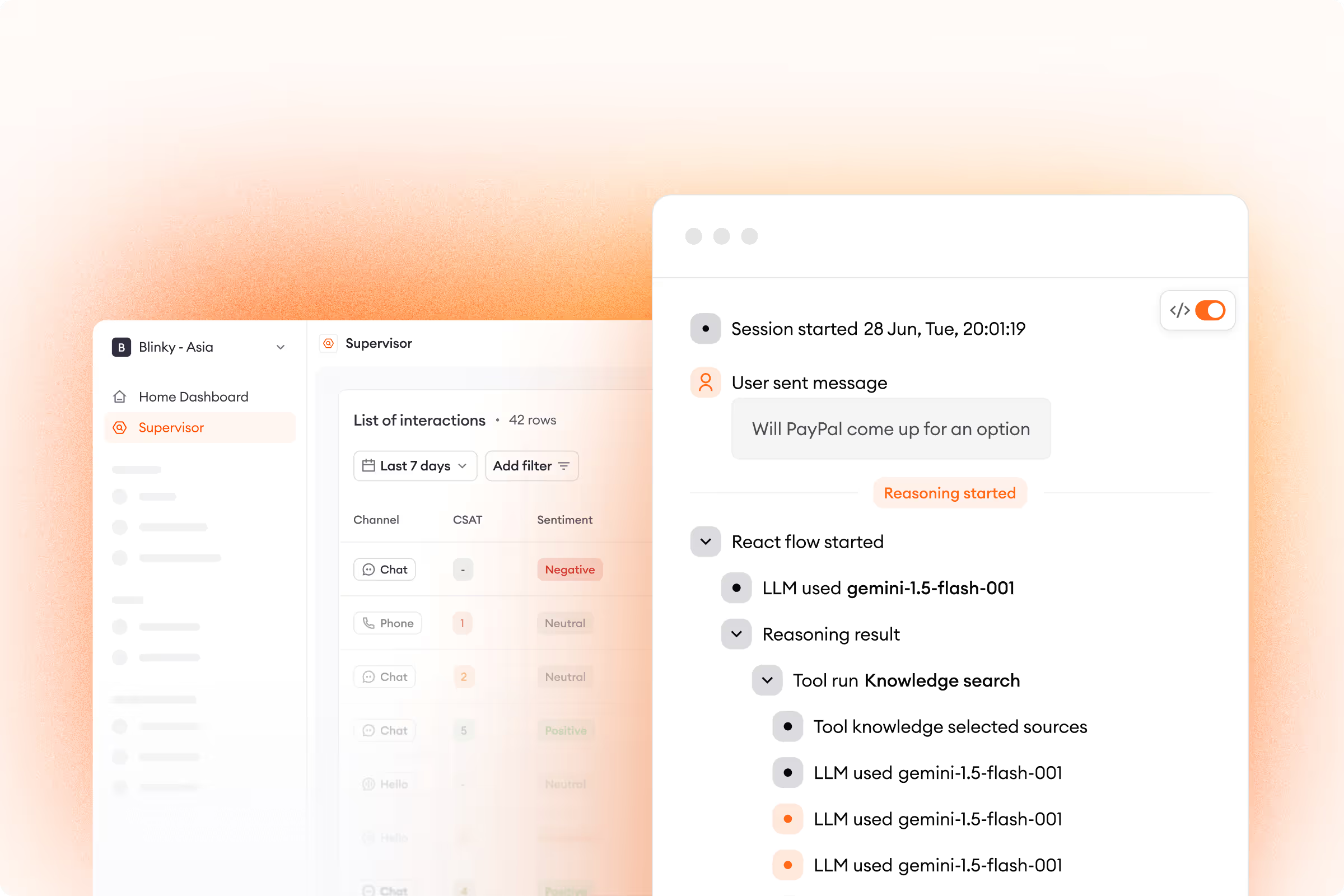Who should your company allocate more resources to: someone who just stumbled upon your website and is casually browsing? Or someone ready to make a purchase right now.
Not all shoppers are created equal. And teams should prioritize their time and effort on those customers who are most likely to buy something.
But how do you zero in on these high-value shoppers? It all comes down to measuring purchase intent.
This article defines what purchase intent is and explores what makes it so important for businesses looking to make it in ecommerce today.
What is purchase intent?
Purchase intent, also known as buying intent or purchase intention, is a shopper’s willingness to buy a product or service from your business within a given period.
A shopper’s purchase intent depends on where they are in their customer journey — or your marketing funnel. That’s why it’s worth monitoring from start to finish.
For instance, customers in the awareness stage have identified their need to buy a new product but have only begun their research, meaning they might not have any transactional intent just yet.
In the interest stage, customers start actively seeking and comparing various products, narrowing down their options to get a better idea of what fits them best. In this stage, the first purchase intent signals usually begin to emerge, with customers more likely to engage and be influenced by marketing campaigns.
Once a shopper reaches the desire stage, they’re ready to evaluate a small number of products and are considering making a purchase. Purchase intention is nearly solidified, and companies should interact to help overcome doubts, clear up objections, and offer reassurance that they’re making the right choice.
Finally, shoppers enter the action stage. If their intent is to buy from you, great! Give them the red-carpet treatment to make sure they follow through with their purchase decision.

Why is purchase intent important?
For businesses with electronic storefronts, it can be difficult to tell who is most ready to buy something. Without the luxury of being able to study shoppers’ body language — or even physically approach them — you need another way to gauge their interest. This is where purchase intent comes in.
Effectively identifying purchase intention allows you to pinpoint the visitors on your website who are most likely to buy something and act appropriately. When you know which customers are the closest to converting, you can deploy your resources more efficiently to close each sale. For example, if someone has been stuck on the checkout page for a specific product, you can utilize a product specialist to answer their questions, offer feedback, and ultimately, provide that final piece of information to push them across the finish line.
In ecommerce, determining purchase intent can also have a substantial impact on your bottom line. Digital advertising prices are soaring, and brands need a cost-effective way of convincing visitors already on their site to make a purchase. After all, once they leave, they may never return. That’s exactly what buying intent detection provides. But it’s not just about saving money. Acting on accurate buyer intent data can increase a brand’s online sales by 10% and in-store conversion rates by 15% — with many companies seeing results within a month.
What factors influence purchase intent?
Purchase intent is influenced by several elements that collectively shape a consumer's decision-making process. Here are some key factors that can impact buyer intent:
Demographics
Certain customers simply gravitate towards some brands more than others. Much of this boils down to demographics — a shopper’s age, gender, or geographic location can determine whether or not they’re in your target audience. If somebody visits a landing page for a particular product and happens to fit your ideal segment, there’s a good chance their purchase intent is high — and that they’re worth pursuing.
Brand reputation
Consumers are more likely to buy from brands they trust. A positive brand image, reliability, and a history of delivering quality products build trust, impacting purchase intent positively.
Personalization
Tailored and personalized experiences, from interactions with customer support to product recommendations, can enhance purchase intent by making consumers feel understood and valued.
User experience
A smooth and intuitive shopping experience contributes to positive purchase intent. Factors such as website design, navigation, and customer service play crucial roles in shaping user experiences.
Convenience
The ease with which consumers can access and obtain a product can impact purchase intent. Factors such as simple payment options, fast shipping, and hassle-free return policies contribute to a positive purchasing experience.
Customer satisfaction
If shoppers are frustrated, there’s a greater chance that they’ll look elsewhere to make their purchases. Businesses that keep customers happy are more likely to see higher purchase intent.

How to measure purchase intent
To calculate purchase intent levels, companies can make use of any of the following methods:
1. Third-party data analysis
Businesses can opt to have external intent data providers collect information on their customers’ intent. While third-party analytics tools can draw meaningful conclusions, collecting these data points is often time-consuming and expensive, delivering a subpar return on investment.
Furthermore, customer preferences are fluid, and as they change, it can be difficult to get a truly accurate representation of where your current shoppers stand.
2. First-party customer analytics
A second option is measuring purchase intent internally by analyzing your own customer data with first-party tools. This information can be collected in various ways. For example, some leading customer support software already allows you to see purchase intent — and does so with accuracy as high as 87%.
Leveraging your own buyer intent software can benefit your organization in a number of ways. Since you know your customers better than anyone, you’ll be able to customize exactly what kind of data you want your tools to track, how to collect it, and what actions to take with this in-depth info.
You’ll also be able to see this information — including predictive analytics — in real-time, allowing you to instantly and proactively reach out to your customers who are most likely to convert.
See how Missouri Star Quilt Co. leveraged customer analytics to drive sales through customer support.
3. Customer surveys
A more direct route is to simply ask potential customers about their intention to purchase through questionnaires. Use Likert scale questions to measure agreement or likelihood among your respondents. An example question could be:
On a scale of 1-5, how likely are you to buy a product from us this month?
Having customers rate their likelihood to purchase makes it much easier to quantify buying intent.
4. Customer feedback
In your customer surveys, you can also ask for direct feedback. How are they feeling about the shopping experience? Are they satisfied? What could be done better?
Analyzing customer reviews and feedback — even social media comments — helps businesses understand overall customer sentiment. This is useful because positive sentiment often correlates with higher purchase intent.
Feedback is also vital in collecting metrics like customer satisfaction score (CSAT) and net promoter score (NPS). A higher CSAT means customers are happy and, therefore, more likely to buy something. Similarly, NPS scores measure customers’ chances of recommending a product, which can be a sign of future purchases.

How to use purchase intent to generate sales
Identifying which customers have high purchase intent isn’t just good to know. As we noted, it can lead to a sustained revenue boost. Here are the ways in which purchasing intent can drive revenue:
1. Personalized communication
Knowing each shopper’s purchase intent enables companies to create personalized offers and promotions and pinpoint the right time to reach out. Targeting customers with tailor-made interactions – such as a promo code at checkout or notifications when new styles of their favorite items are available — can make your messaging more compelling and give shoppers who are considering a purchase an extra nudge in the right direction.
Personalized recommendations can also be used in upselling and cross-selling. By suggesting additional products based on a customer’s intent and preferences, businesses can enhance the value of any purchase and increase overall sales.
2. An optimized customer experience
Companies can boost purchase intent by elevating the customer experience at various touchpoints, making customers more satisfied along the way. For instance, you can ensure a seamless and user-friendly buying process. Anything that’s lengthy or complicated will only discourage potential buyers, even if they initially had a high purchase intent.
Responsive customer service can also play a major role in improving the user experience. Companies can provide real-time customer support, addressing queries promptly to instill confidence and reinforce purchasing intent.
Why not go one step further and reward repeat customers with loyalty programs? Acknowledge and appreciate loyalty to encourage future purchases from your existing customers and keep purchase intent high.
3. Greater customer insights
Some customer service platforms are built to make identifying and acting upon purchase intent easy. By providing agents with customer data like location, order history, and even current mood, these solutions accurately represent an ecommerce shop’s customers.
Equipped with this information, service reps can provide personalized recommendations to specific customers who will most likely convert straight from your catalog. What’s more, this can be done proactively — agents don’t need a customer to reach out to them first.
Instead, you can create triggers that alert agents when a visitor with high purchase intent could use some help, like when a shopper spends an extended period of time on your checkout page. Now, agents can step in at these crucial moments in the customer journey and offer assistance.
Discover how Zowie Grow’s 360-degree customer view turns every interaction into a chance to sell.
Let’s see all of this at work with an example.
Carrie is shopping online and has viewed multiple laptops on your website — but she hasn’t committed to a purchase. A customer service platform can recognize Carrie as having high buying intent.
This enables your agents to proactively reach out via chat, asking if she’d like to get more information on any of the models or even speak with a product expert. Not only can Carrie get any questions answered right then and there, but her chances of finding that perfect product and clicking Buy have significantly increased.
Instantly being able to track which of your customers have a high buying intent — and which don’t — can yield considerable gains for your organization. Knowing this allows you to deploy your resources efficiently and, ultimately, close more sales.

Drive meaningful profit through purchase intent
Zowie is an all-in-one customer service solution that detects buying intent and fosters support-driven sales.
To see what you can achieve with the new Zowie X2 — the #1 generative AI for ecommerce — book a free demo today.
.avif)

.avif)
.svg)







